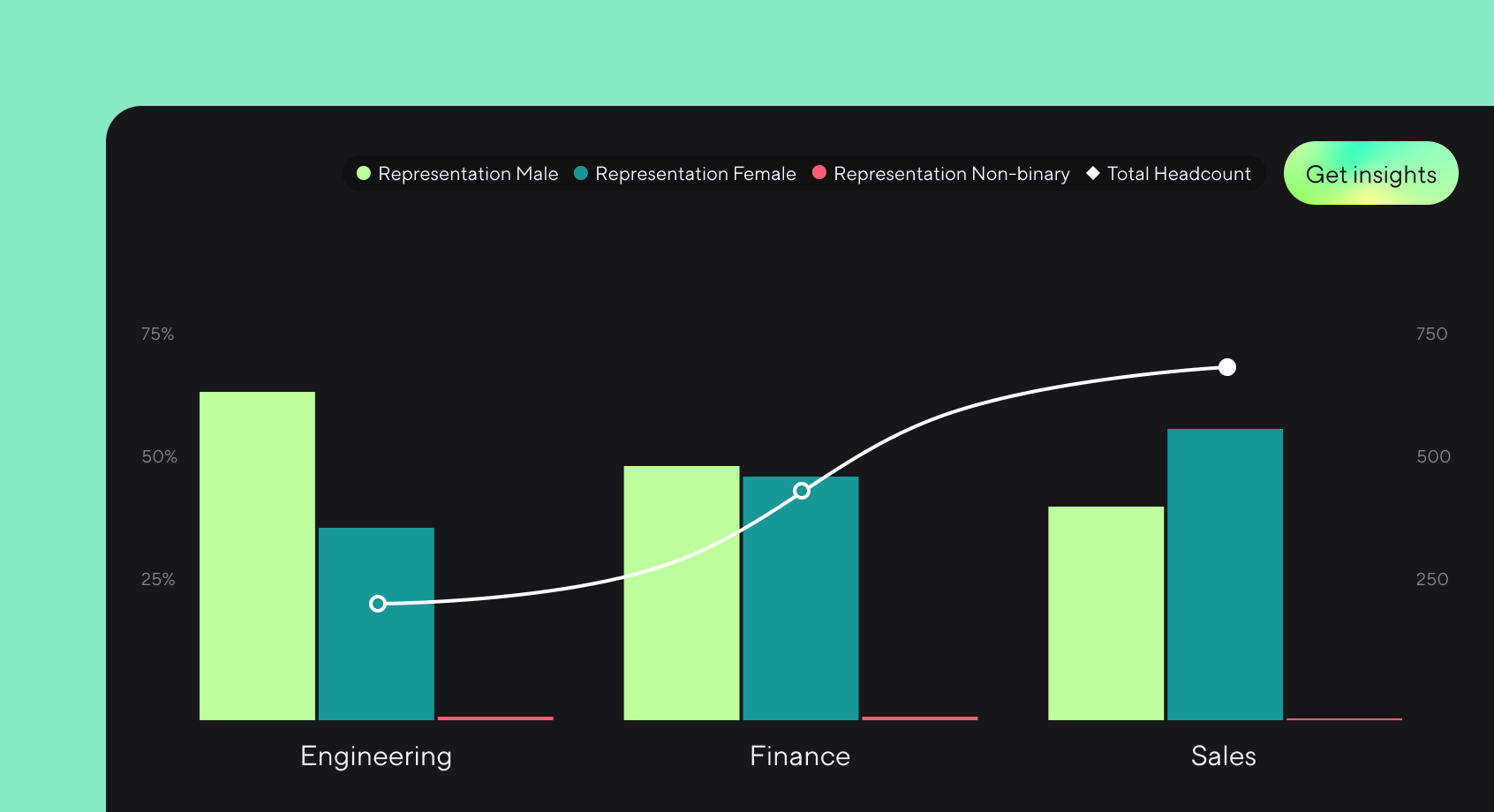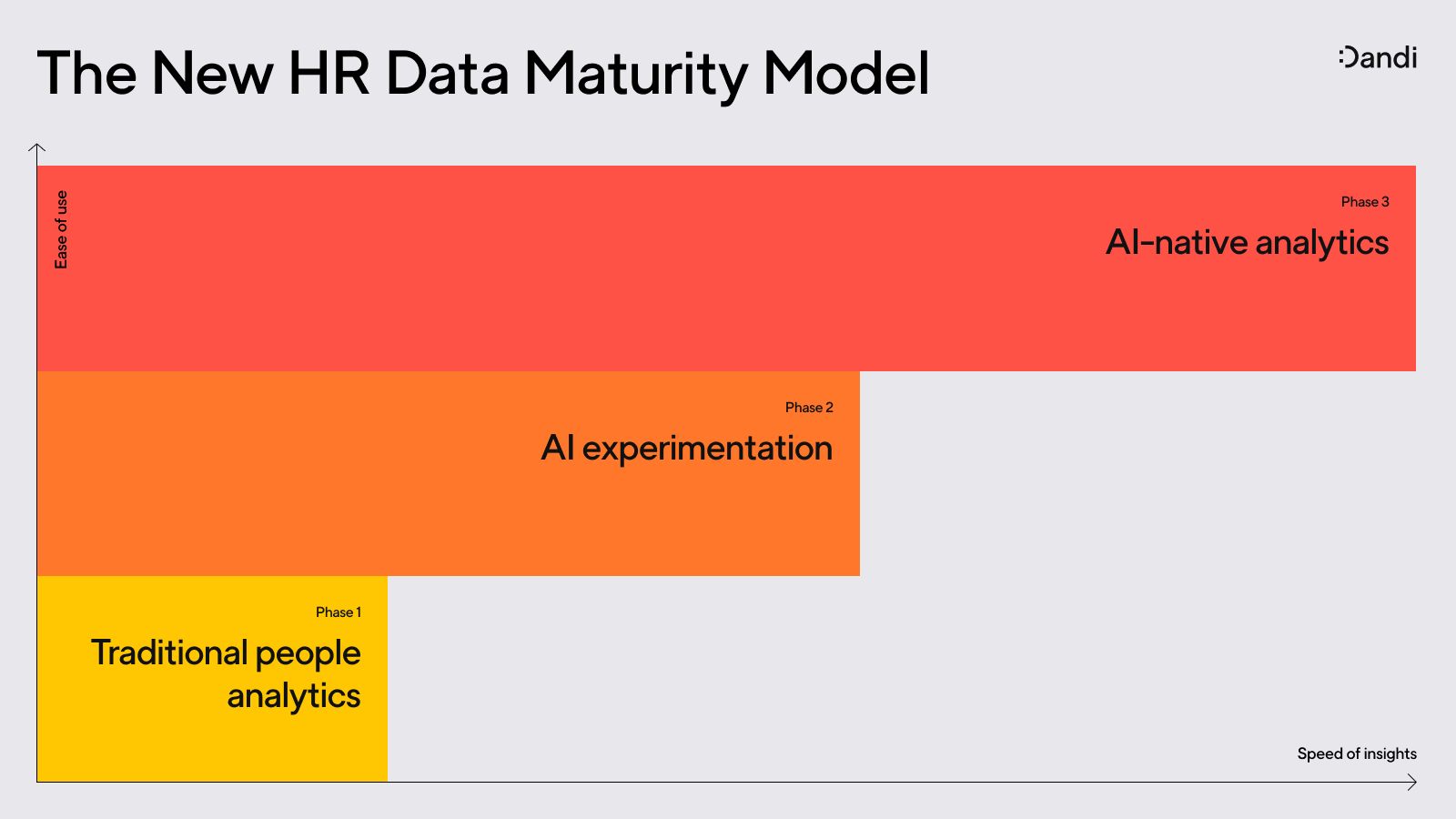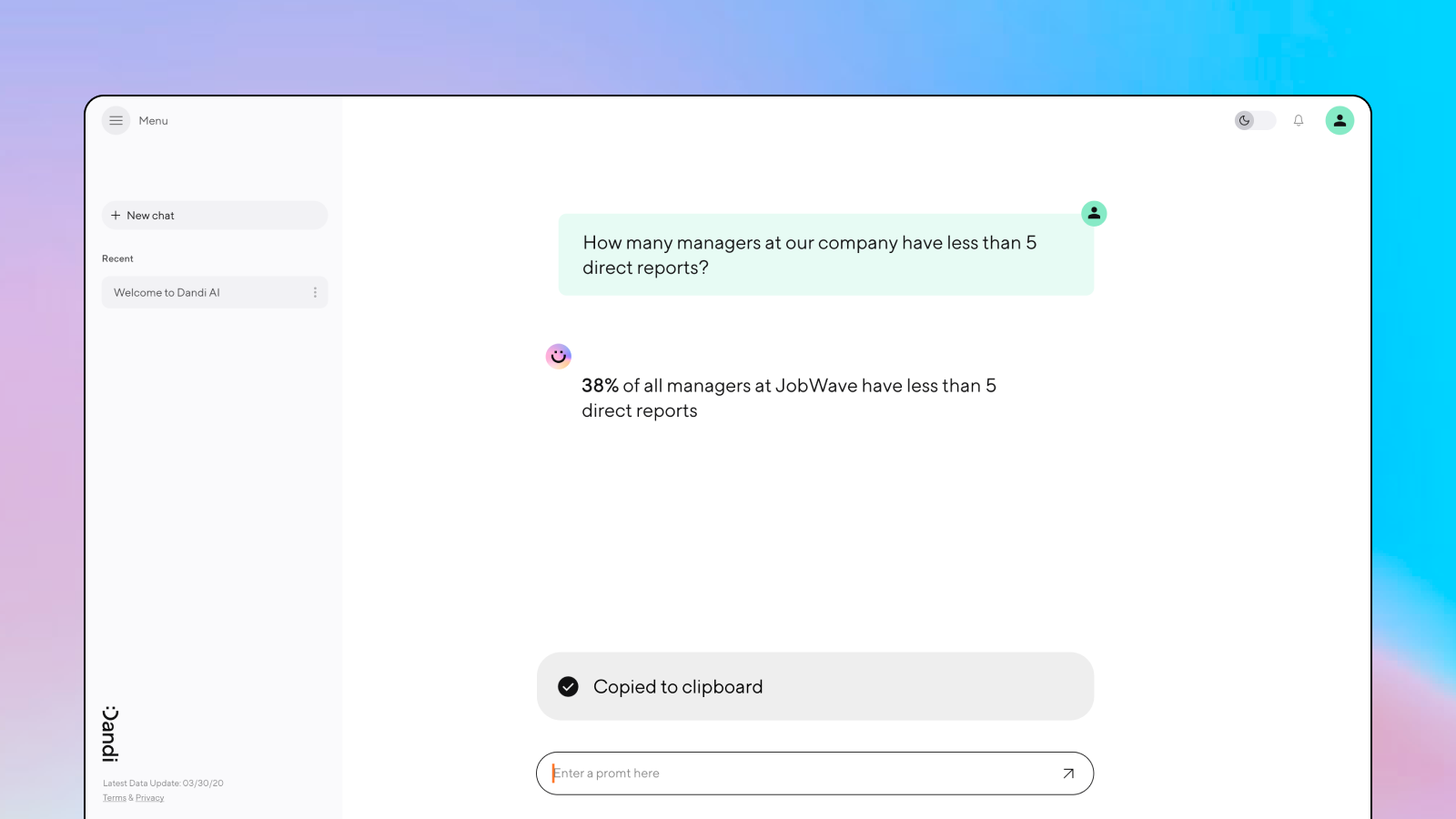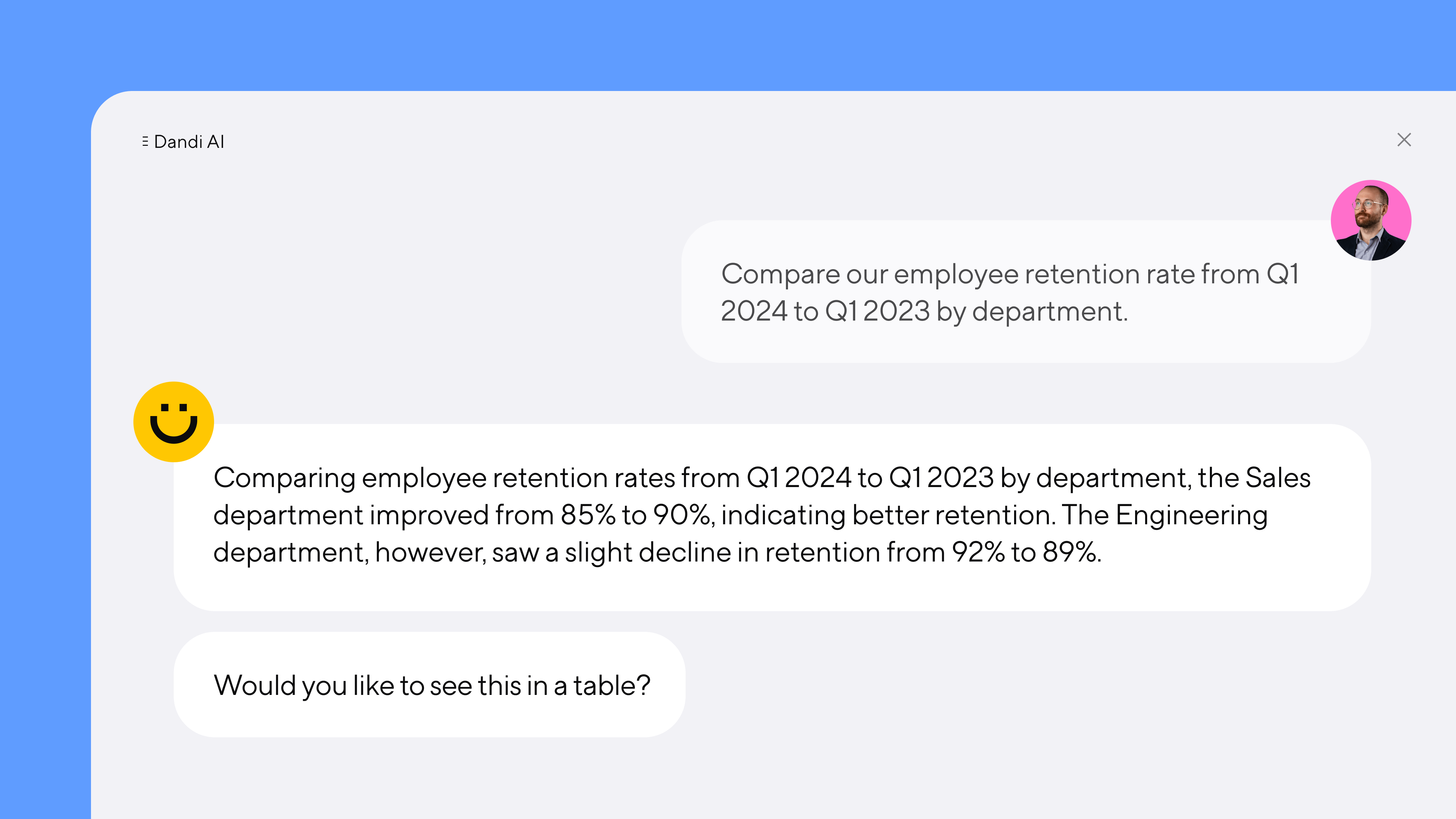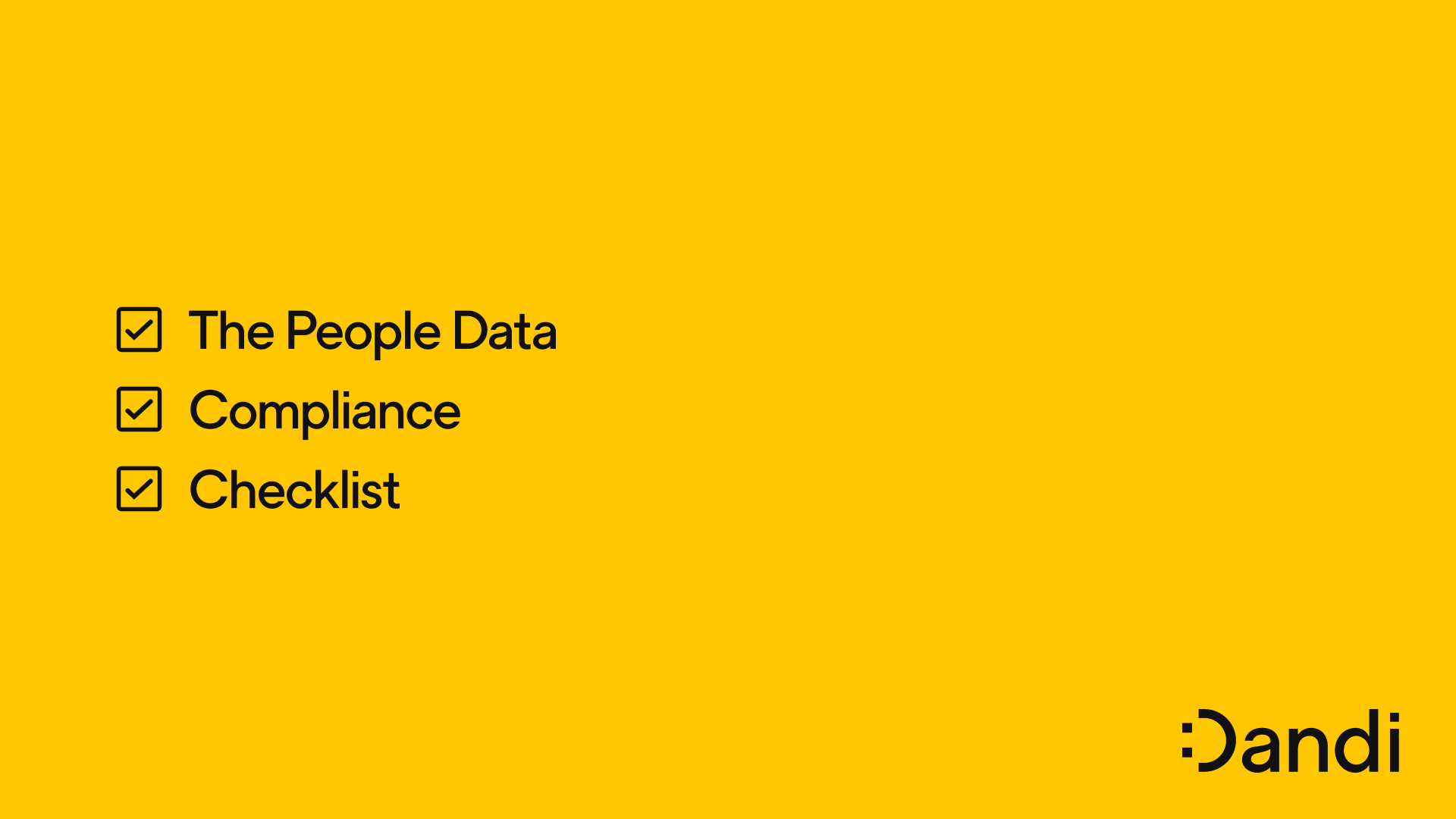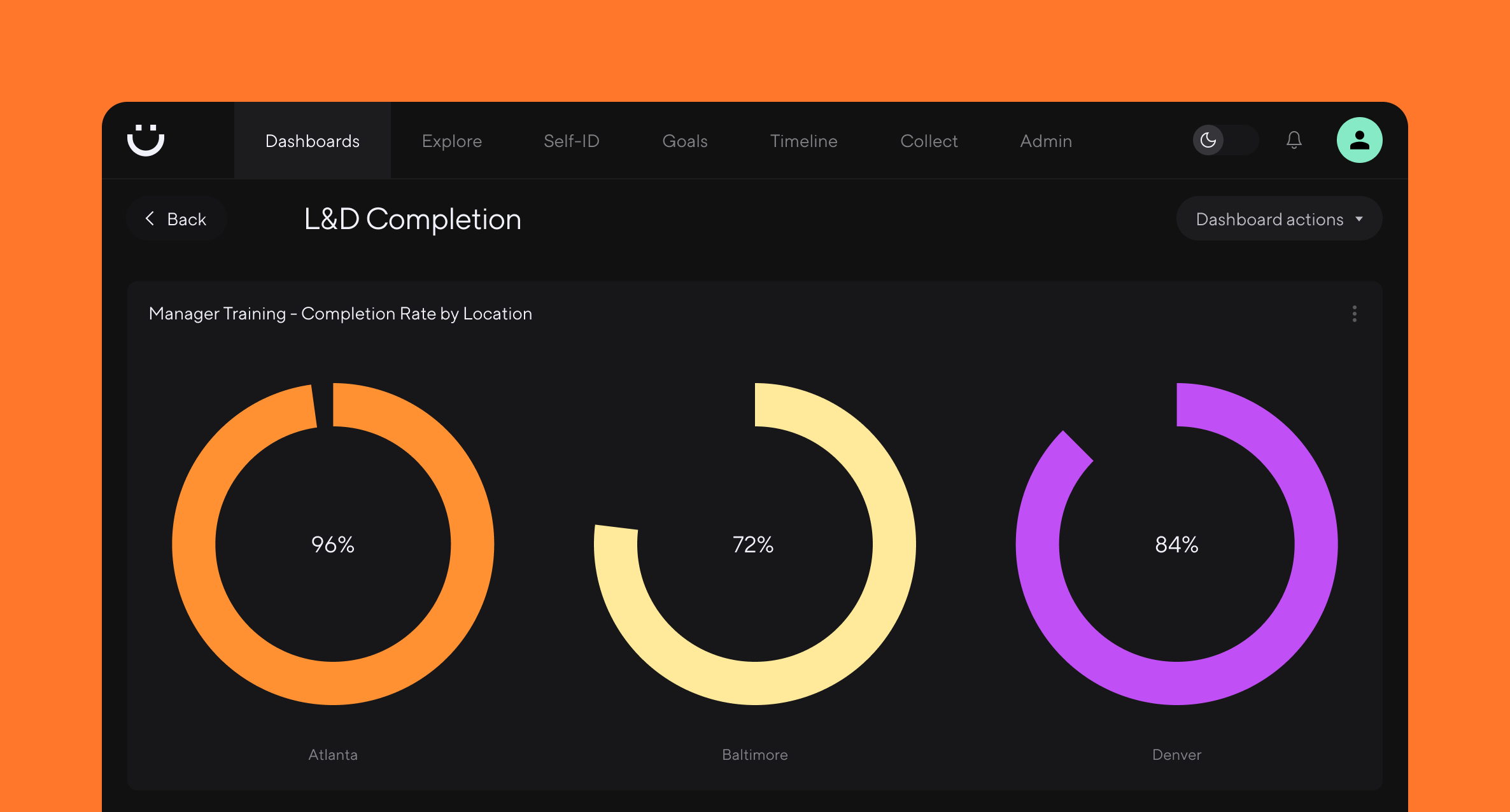Proven strategies for boosting engagement in self-ID campaigns
Catherine Tansey – Mar 27th, 2024
Voluntary self-ID campaigns are essential for any serious HR or DEI program. The question is: how to encourage employees to participate? Learn how Dandi customers build trust and encourage participation with employees and leadership.
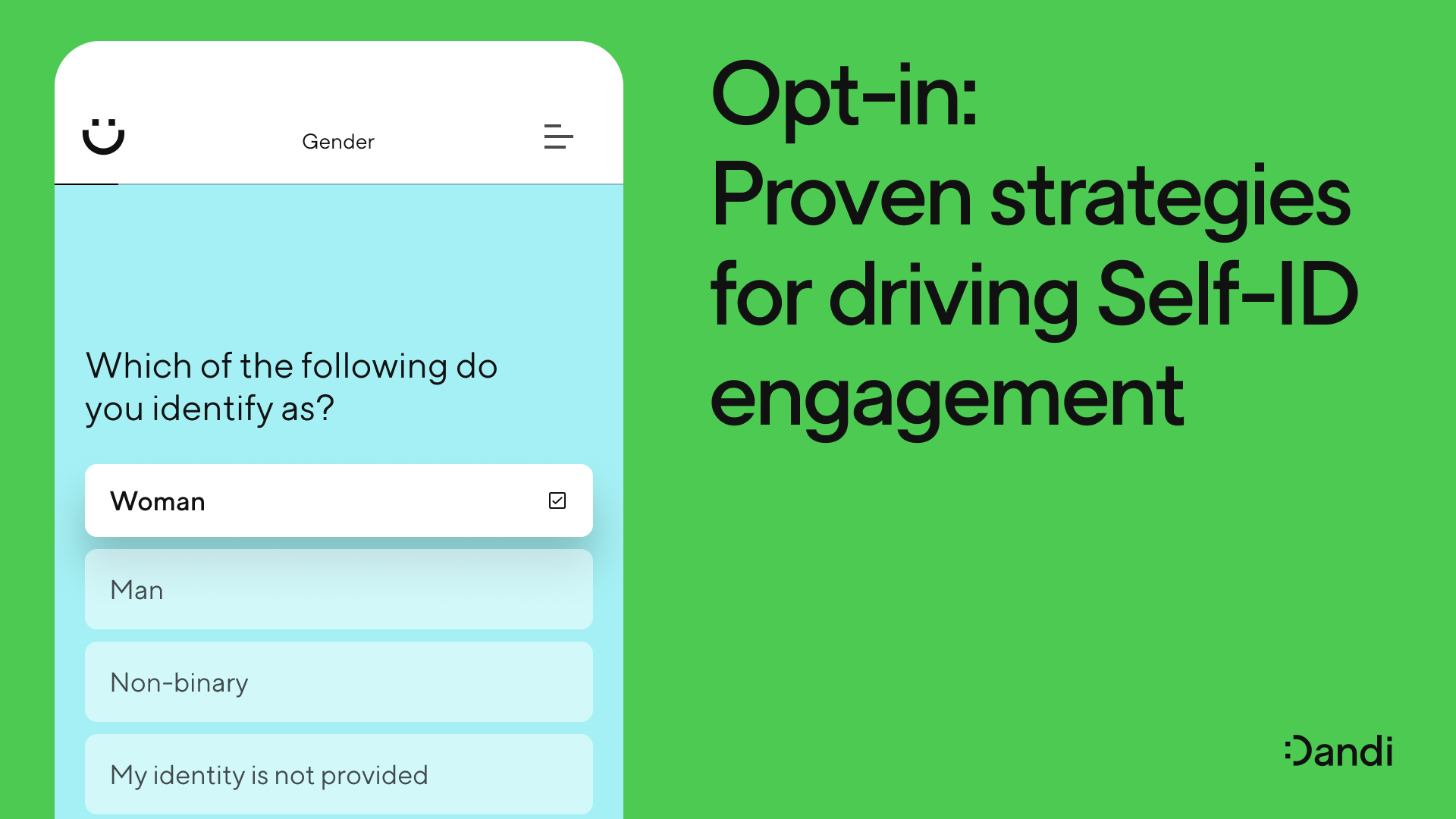
While the formerly strict lines between the personal and professional have softened in recent years, employees may still feel reluctant to disclose certain personal information to their employers — like how they identify.
Today’s political climate and culture wars further entrenches existing hesitation to employee participation in voluntary self-identification (self-ID) surveys. “The discourse around identity politics invariably impacts the conversation around employee data,” said Jason Gong, DEI Lead at Dandi.
Whether they’re concerned about data privacy, bias or stigmatization, or simply don’t care to share personal information with their employer, many employees opt out. Yet voluntary self-ID data is essential for any serious HR or DEI program.
Read on to learn more about the importance of employee engagement in self-ID campaigns, and how two Dandi customers have built trust and encouraged participation with employees and leadership.
The importance of employee engagement in self-ID surveys
Self-ID survey results give organizations a clearer understanding of who makes up their workforce and how they identify themselves. Without self-ID data, employers are left relying on a combo of the mandatory-to-collect EEOC data and a “visual survey,” which hardly provide rich or accurate insights.
Moreover, integrating self-ID data with other workforce information, such as engagement survey results, provides companies with invaluable opportunities to gain intersectional insights into their workforce.
A strong communication plan is key to easing employee concerns regarding self-ID campaigns.
Yet employees aren’t always eager to offer up their most personal information, fearing retribution or simply not understanding how this data will be used. A lack of transparency and communication on the employer's part can compound this.
“When communication and trust do not exist, employees are going to be much more reluctant to report. They may fear how that information is going to be used, and whether or not disclosing something really sensitive — like disability, status or sexual orientation — might be used against them at a certain point in time,” Gong said.
Coupling a strong communication campaign with transparency about survey results, a clear plan of action, and regular communication are all key to easing employee concerns and encouraging participation.
The importance of transparency
When employees take the time to self-ID and volunteer highly personal information, they want to know the results. By sharing in a way that offers transparency while reinforcing privacy and confidentiality, companies can boost employee engagement in the process.
Adtech company MiQ has published their I.D.E.A. report — Inclusivity, Diversity, Equity, and Accountability — annually since 2021.
“We created a campaign internally asking people to fill out their demographic information and giving them the reasons why,” said Sara Axelbaum, Global Head of Diversity, Equity, and Inclusion. “We talked about how we use that data for the I.D.E.A. report, that it’s always used in aggregate, and that we weren’t going to use it in a personally identifiable way,” she added.

When launching our self-ID campaign, we made sure to communicate that the data wouldn't be used in a personally identifiable way.
Sara Axelbaum Global Head of Inclusion and Diversity, MiQ
The data MiQ collected yielded rich insights about the workforce, which Sara and her team used to produce the I.D.E.A. report and subsequently share with employees. “We were able to get a lot of great information into the I.D.E.A. report, and I feel like that’s really set us out on a more strategic path of using data to ensure we’re making prudent decisions, and know where our baselines are,” she said.
More recently, as MiQ transitioned to a new system to store personal employee information, they conducted a new self-ID campaign to capture as much of that data in the new systems as possible.
Existing employees were familiar with the I.D.E.A. report and knew how their data would be used, but MiQ had to warm up new employees — who receive the self-ID survey within their first month — to the process. To do so, MiQ shares their I.D.E.A. report to demonstrate the actual use of the data.
“I think when people see the report, they're like, oh, ‘I get it and this is great and I want more of this,’” Sara said.
Crafting a clear plan of action
When it comes to any sort of employee data collection, it’s crucial not only to ask but to act. If the company fails to act on survey results, it not only misses out on driving toward it goals but may also discourage employee engagement the next time around; when employees don't see the company addressing survey issues, they're less likely to participate in the future.
“Companies need to be sharing [this data] with a plan, sharing it with intention, and doing it with the goal of contextualizing for your audience what they're looking at, why it's important, and most importantly how it's going to inform the work of strategy, processes, and systems,” said Gong.

When sharing data, companies need to be clear about how it's going to inform strategy, processes, and systems.
Jason Gong DEI Lead, Dandi
MiQ’s first I.D.E.A. report highlighted disparities the people team knew they needed to correct. “We found a hidden but pretty significant pay gap for our employees who identified as women, and so we put a plan in place to close that pay gap,” said Sara.
By the time next year’s report came out, MiQ had successfully done so. Sara said sharing the plan of action and results really encourages employees to continue to participate and share data.
“Our I.D.E.A. report has gotten a really great response, and even just that one pay equity proof point has been really helpful for people to say, ‘I see what impact it can have on actually taking action and making change around here,’” she said.
Maintaining communication: the drumbeat of progress
Self-ID survey results can yield substantial insights, requiring time to not only build out programming and processes but implement them. That’s ok. It’s not always possible (or advisable) to accomplish everything in a short-time frame.
When that’s the case, it’s important to keep employees in the know. Maintaining a drumbeat of communication on progress keeps employees involved, reinforces the survey's purpose, and ensures they are informed about how their results are being utilized.
“You may not have the resources to do everything you’d love to do immediately,” said Venus Brown, the VP of Organizational Effectiveness at global marketing services company Assembly.

You may not have the resources to do everything you’d love to do immediately. Be open with employees about that, and share your year 1, year 2, and year 3 plan.
Venus Brown VP, Organizational Effectiveness, Assembly
“For example, say you realize from the data that the organization could use more employee resource groups, that you need to implement new recruiting plans, or you want to overhaul development and succession planning,” she added.
“Be open with employees about that, and share your year 1, year 2, and year 3 plan. Sharing the progress on these goals will help individuals buy into self-ID and say ‘This data is important. I see why they were asking for this, and I’m glad I participated,’” Venus said. "Using a tool like Dandi has been critical to our enablement of sharing the self-ID data easily and succinctly for employee consumption and understanding," she added.
Conclusion
By openly sharing results, establishing clear action strategies, and sustaining ongoing communication, companies can underscore the significance of self-ID surveys and empower employees in actively contributing to cultivating a more inclusive and diverse workplace environment.
Simple, secure, and globally compliant, Dandi Self-ID breaks down many of the biggest barriers to employee data collection. Learn more about how it works.
Looking for more self-ID resources? Check out our guide to successful self-ID campaigns.
More from the blog
Announcing more powerful Dandi data visualizations
Team Dandi - Oct 23rd, 2024
The New Maturity Model for HR Data
Catherine Tansey - Sep 5th, 2024
Buyer’s Guide: AI for HR Data
Catherine Tansey - Jul 24th, 2024
Powerful people insights, 3X faster
Team Dandi - Jun 18th, 2024
Dandi Insights: In-Person vs. Remote
Catherine Tansey - Jun 10th, 2024
Introducing Dandi AI for HR Data
Team Dandi - May 22nd, 2024
5 essential talent and development dashboards
Catherine Tansey - May 1st, 2024
The people data compliance checklist
Catherine Tansey - Apr 17th, 2024
5 essential EX dashboards
Catherine Tansey - Apr 10th, 2024
Proven strategies for boosting engagement in self-ID campaigns
Catherine Tansey - Mar 27th, 2024
